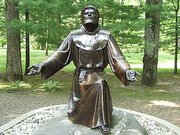A drunken night
 It was just not fair!
It was just not fair!
30th May was a busier than normal for a Saturday night. To mark the new regulations banning alcohol from London’s buses and Underground, some highly irresponsible individuals called for a massive party.
On Sunday morning, London awoke (if the capital had been allowed to sleep) to discover that thousands of people had flooded into the city, leading to a massive amount of gratuitous damage at the hands of drunken louts, the closure of six main stations, trains so defaced that they have been taken out of service, 17 arrests, multiple injuries and an uncalled-for impact on the emergency services and on the many people who were not a part of the alcoholic revels of those who probably boasted of ‘a great rave’ when they emerged from their hangovers. Of course, they were not part of the clean-up of litter or the repair of damage. Neither did they offer to assist the police or medical staff with the paperwork and tidying of police stations, cells and the Accident and Emergency hospital departments.
Whilst the ‘party’ was in process and throughout the night, there was an almost unbroken stream of police and ambulance sirens. Although the alcohol ban only began at midnight, by then the drinking had resulted in drunkenness and its accompanying effects.
How often do those whose drunkenness impinges on others spare a thought for the victims of the road accidents that they cause or for the hospital staff who have to deal with the disgusting aftermath of sodden, vomiting, incoherent intervals reeling in their corridors?
Some years ago, I listened to a police sergeant who had spent Christmas morning dealing with the follow-up of a road accident. A drunken driver had a head-on collision with another car, resulting in the death of a man and his daughter’s boyfriend. The girl herself had multiple injuries, including two broken arms. The drunk escaped without even a scratch.
The policeman managed to deal with the aftermath of the crash and then, on Christmas morning, visited the hospital to speak to the daughter, by then conscious. “What hurt most”, he said, “was seeing the girl with both arms in plaster and unable to bend her arms to wipe the tears from her eyes.”
Then there was a member of the London Ambulance Service. “I never like going to a road accident because I never know in advance what I am going to see or what I am going to have to do. Sometimes it is really hard to remove the images from my mind when it is all over and done with. It can be finished on the road, but my brain is another matter altogether.”
Moving away from London, one morning, whilst still in Rome and on my way to work, I saw a car being lifted out of the River Tiber. A young woman, on her way home from a party, had driven through the side of the bridge and, carried by the car’s momentum, hurtled into the stone wall on the riverbank. Rebounding, the car crashed onto the paved pathway and tumbled into the river. Flattened and crushed both horizontally and vertically, the young driver, a law student, had no chance of survival. The vehicle, frighteningly distorted, was a horrendous indication of the scene that faced the men who had to cut the girl out and carry what was left of her to the ambulance. Perhaps the fact that the ambulance drove from the scene of the accident without a siren (an unusual scenario for Rome) and without speeding said more than words could have expressed.
How many people were affected by the party that the girl attended in the last few hours of her life?
How many have been affected by the thoughtless antics of the yobs as London bade farewell to the drinking of alcohol on buses and trains?
Why should the irresponsibility of the few impinge on the lives of the many?
Why is it so difficult for some people to reflect on the impact of their actions? There is a saying that it is impossible to ‘put an old head on young shoulders’.
Yet, recently, I saw a photograph of some of the Ugandan martyrs, taken shortly before they were captured, tortured and died. Twenty-two, some of them children, have been canonised. St. Kizito and his companions were so young and vulnerable and yet, aged 12, on June 3, 1886, they allowed themselves to be bound in straw mats and set alight rather than betray their Lord.
Daily, I see the ivory-coloured tunic of one of at least 8,000 Korean martyrs. Did it belong to St. Peter Yu Tae-chol, a 13-year old boy, tortured and strangled on October 31st, 1839? It is so small and still bears the stains of his suffering. Was he not terrified in his agony? How did he manage to be so strong and determined as he faced such terrible treatment at the hands of others?
The bad behaviour of the few young people damages the good names of the vast majority … but is it not incumbent upon adults to show the example? What are the precedents that we set?
St. Kizito and St. Peter Yu Tae-chol did not ‘just happen’. Young as they were, there was already something in their lives, nurturing and sustaining their faith, that gave them the incredible courage, as children, to lay down their lives.
Could there be something in my own life that might engender a similar faith in those around me? Would it not create a rather more positive memory than a night of revelry and binge drinking on the London Underground?
God bless,

